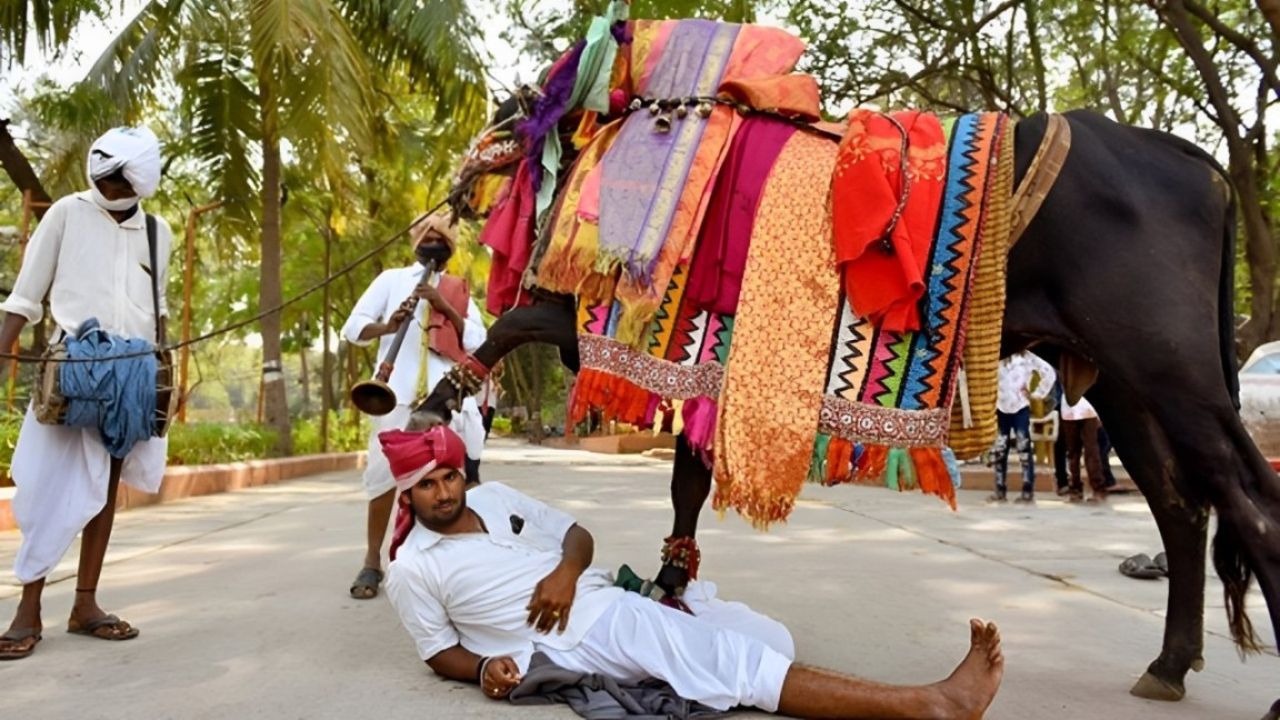
Gangireddu refers to a decorated bull that plays a key role in the festive traditions of South India, particularly during the Sankranti festival, celebrated in Andhra Pradesh and Telangana. The term “Gangireddu” literally translates to “bull,” and the practice associated with it is a culturally significant and visually vibrant part of the Sankranti festivities.
The Gangireddu tradition has roots in the agricultural history of South India. Bulls were indispensable in plowing fields and transporting goods, especially before mechanization. Their role in agriculture made them symbols of wealth and productivity, and their importance is reflected in the honor and reverence given to them during festivals.
Even today, though agriculture is modernized, the Gangireddu tradition remains a cherished part of Sankranti, offering a blend of rural culture, folklore, and spirituality.

